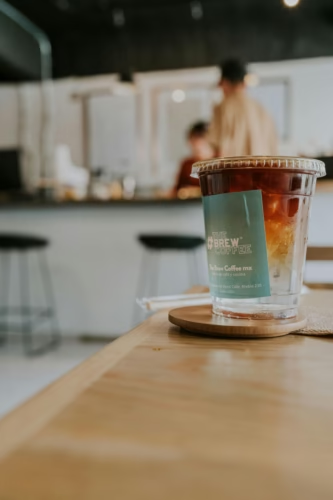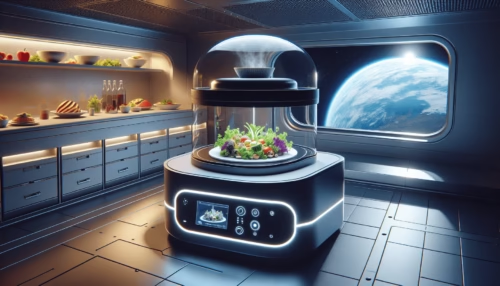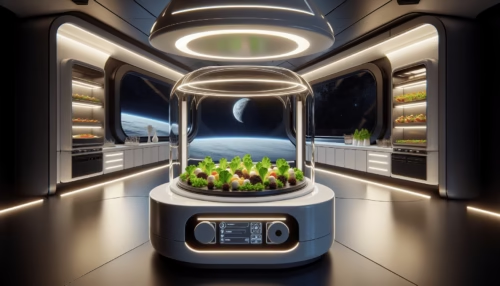3D Printed Meals: How often have you pondered the thought of what astronauts are dining on while they float hundreds of miles above us in space? The prospect of what they consume, considering the constraints of space travel, sparks a unique intrigue. Today, as space exploration boldly marches into new frontiers, so does the menu. The journey from pre-packaged tubes to futuristic 3D-printed meals is an adventure in itself.

Table of Contents
Historical Perspective: Eating in Microgravity
The very first space explorers faced a limited array of menu options. The early days were devoid of any gourmet, or even half-decent, culinary adventures. Astronauts ate from toothpaste-like tubes and nibbled on bite-sized cubes. These meals, though practical in terms of packaging and storage, lacked flavor and morale-boosting traits—a crucial consideration when you are isolated from the world.
The purpose of these early space foods was predominantly utilitarian: energy-packed, non-spoiling, and easy to handle in a zero-gravity environment. Over the decades, however, more effort has been expended to enhance taste and texture, inching closer to earthly standards.
The Challenge of Microgravity
In the weightless environment of space, where traditional cooking poses inherent challenges, preparing food isn’t merely about combating appetite fatigue. Microgravity affects everything from how water boils to how crumbs and condiments perform the unspeakable chore of floating everywhere.
Early Inventions
Starting with the Mercury and Gemini programs, NASA experimented with food blocks and tubes. A simple chicken soup in a tube was a breakthrough; however, astronauts weren’t always delighted with these selections. By the time we reached Apollo, freeze-drying technology allowed for a more versatile menu, setting the stage for innovations yet to come.
Current Advancements in Space Cuisine
In recent times, the goal is no longer just to sustain life but to elevate it, even in the harshest environments. Ongoing technological advancements allow for menus that surpass mere survival, enabling astronauts to savor food that reminds them of home.
Freeze-Dried Food Evolution
Freeze-drying remains a staple in current space missions. It strips away moisture, extending shelf life without sacrificing nutrition. Before eating, water is reintroduced into the meal, a process that now includes a wide array of options from shrimp cocktail to beef stew.
Thermostabilized Packaging
Introduced in the Shuttle program, thermostabilization sterilizes food using heat. This method keeps meals flavorful and aesthetically pleasing. Foods like pasta and chicken now maintain their structures, bringing comfort to weary astronauts.
Pre-Packaged Meals and Their Varieties
Today’s astronauts have menus enriched with international offerings. They enjoy the authenticity of diverse cuisines, as exhibited in their selection of Russian soups, Italian pasta, and even Japanese sushi. These meals not only address nutritional requirements but also care for mental wellness—a critical factor during extended missions.

The Future: From 3D Printing to Cultivating in Space
The focus has shifted towards producing food onboard to reduce dependence on Earth resupply missions, marking an era of self-sustained long-duration missions.
3D Printing Comes to the Table
3D food printing stands at the forefront of this culinary revolution. The process involves printing layers of food pastes and materials to reconstruct familiar dishes, an elegant solution balancing creativity and nutrition. Imagine biting into a perfectly seared steak or an accurately rehydrated pizza, each layer precisely placed to stimulate taste buds akin to real cooking.
Benefits and Challenges
A primary benefit is its ability to customize nutritional values specific to astronaut requirements. Furthermore, it minimizes packaging waste—a necessity for longer missions. The challenge remains with texture and flavor replication, elements under continuous research.
Hydroponics and Aeroponics: Growing Fresh Produce
Growing vegetables in space isn’t new but scaling it to be a viable source of food is revolutionary. Modern technologies like hydroponics and aeroponics provide methods for growing plants without soil, relying on nutrient-rich solutions or mist to feed plants.
Feasibility of Space Gardening
Successful harvests of lettuce and radishes in the International Space Station’s experimental gardens lay the groundwork for the future. As techniques evolve, the vision extends to cultivating diverse crops in artificial biomes, emphasizing a sustainable food source for missions beyond Earth.
Psychological Aspects of Space Eating
Beyond survival, eating serves emotional and psychological purposes, especially in the isolated vacuum of space. The ability to choose and consume desirable foods provides comfort and familiarity, addressing psychological well-being.
Social and Emotional Nutrition
Though often overlooked, social dining experiences are vital even in space missions. Sharing meals fosters camaraderie, essential for long endeavors. Research highlights that the menu variety and ability to mimic familial meals significantly impact astronaut morale and social bonding.
The Science of Flavor and Scent
In the absence of gravity, changes occur in smell and taste perception, often dulling the senses. Scientists are diligently working to balance flavors, ensuring that even once-mundane meals pique the interest of taste buds unused to the pull of Earth.

Health Considerations and Nutritional Balance
When considering the health demands of astronauts, food plays a central role. Their meals are meticulously planned and scrutinized to ensure they meet rigorous dietary needs in an environment where exercise is limited, and calories count differently.
Nutritional Challenges in Space
The lack of gravity results in muscle atrophy and bone density loss factors directly influenced by diet. Incorporating enough nutrients—calcium for bones, protein for muscles, antioxidants for cellular health—is crucial when planning these space-bound meals.
Tailoring Nutrition with Technology
Each meal is custom-tailored, using nutritional science and advanced monitoring tools, to match the metabolic needs of individuals. Enter the realm of personalized nutrition where food not only serves traditional roles but is fine-tuned to counteract the adverse effects of space.
Industry and International Collaboration
The pursuit of space food’s evolution involves a collaborative effort from governmental space agencies, private enterprises, and research institutions worldwide.
Partnerships Leading the Charge
NASA collaborates with international counterparts like ESA and private entities, fostering innovation that transcends space missions, with implications for terrestrial food security and sustainability.
Private Enterprises’ Involvement
Companies like SpaceX and other private entities sign partnerships, pioneering methods that promote self-sufficient and sustainable food systems. Their explorations might soon influence Earth-based agriculture, with innovations in food technology potentially addressing global food insecurities.

The Vision Forward: Long-Term Space Missions
Anterior planning emphasizes extended missions to Mars and beyond, wherein the quality and sustainability of food supplies will play a pivotal role. The ultimate goal: a self-sustaining community capable of thriving beyond Earth.
Multigenerational Spacecraft and Colonies
In the coming decades, spacecraft will likely journey vast distances, aiming to establish colonies. Food production and distribution innovations will be crucial to the feasibility of such long-term missions, requiring a blend of advanced agriculture, smart resource management, and innovative culinary solutions.
Terraforming and Resource Utilization
Concepts encompassing terraforming and resource utilization on extraterrestrial bodies include using local resources to grow food. This shifts the paradigm from mere sustenance to developing a thriving ecosystem supporting human life.
Conclusion: The Culinary Odyssey Beyond Earth
In summation, the evolution of space food—from rudimentary tubes to avant-garde 3D-printed meals—encapsulates a fascinating blend of science, technology, and imagination. Its transformation marks a testament to human ingenuity and adaptability, staying ever prepared as humanity reaches for the stars.
As we advance, the notion of food expands beyond nourishment, serving as a cultural and emotional bedrock. This culinary journey inspires solutions to pressing issues not only off-world but also on terra firma. In extending our reach to embrace the cosmos, we redefine what it means to dine, bringing the comfort and continuity of Earthly pleasures to the far corners of our universe.


